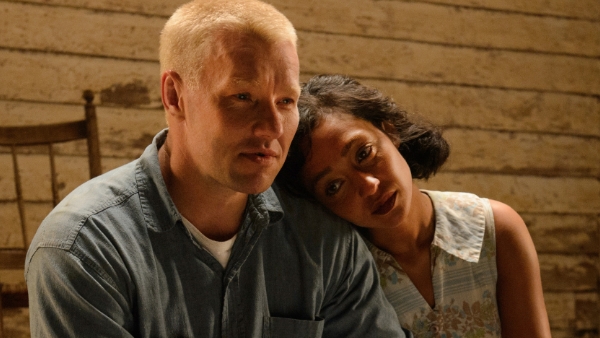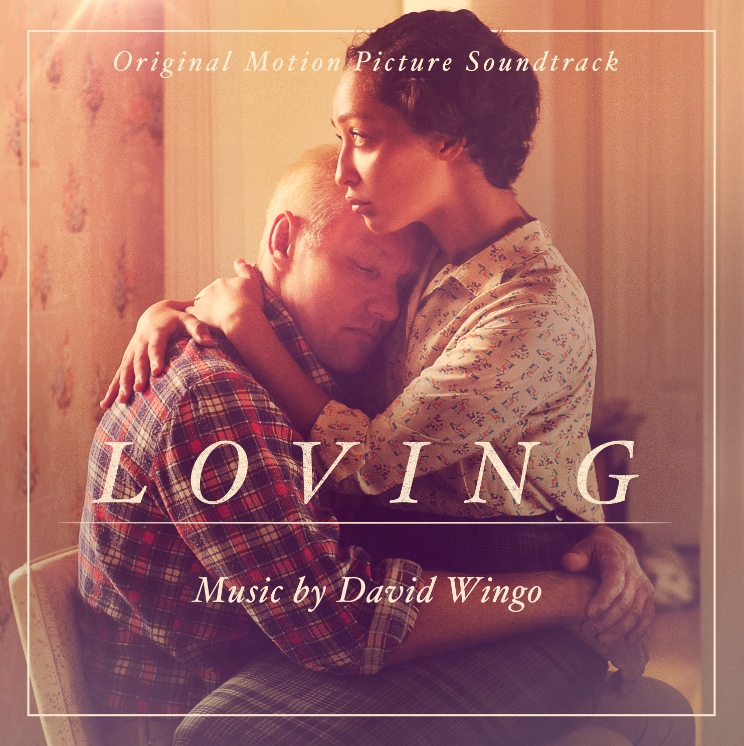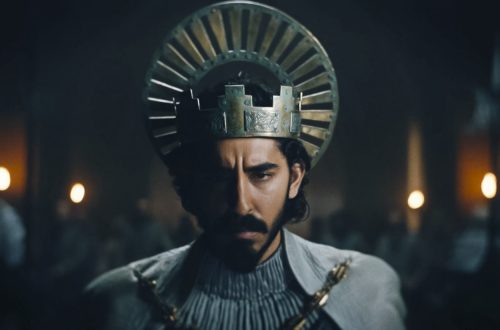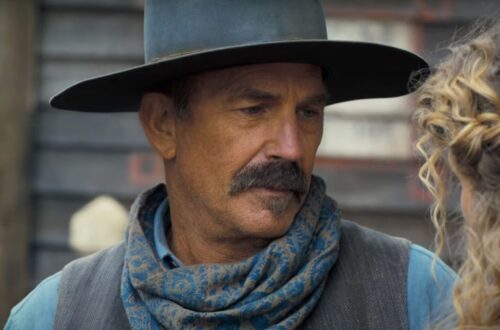 In what some consider the start of awards season, November gives us the release of Jeff Nichols’ incredibly moving story, Loving, (about Mildred and Richard Loving) featuring the original score by David Wingo, as well as a new original song, “Loving,” by Ben Nichols of the band Lucero.
In what some consider the start of awards season, November gives us the release of Jeff Nichols’ incredibly moving story, Loving, (about Mildred and Richard Loving) featuring the original score by David Wingo, as well as a new original song, “Loving,” by Ben Nichols of the band Lucero.
The seasoned composer has been active with his band Ola Podrida since 2006, releasing three acclaimed full-length albums, and touring the U.S. and Europe multiple times. But Wingo has also been racking up a number of distinctive and high profile scores to celebrated features directed by some of this century’s most sophisticated independent filmmakers. Loving marks the fourth time he and director Jeff Nichols have worked together.
Wingo may work on movies with big Hollywood stars, yet this Austin-based composer is still a Texan at heart (he grew up not far from where I now call home). In fact, he and director David Gordon Green met when they were 8 years old – they are both graduates of Richardson High School – and it was Green who helped get Wingo into film scoring.
For the score to the Jeff Nichols directed Loving, Wingo offers a classical approach to a film that was anything but contemporary. While his forte is electronic sounds, this reserved orchestral effort is something new to the composer but also shows his range growing. Enjoy the entirety of our time with David Wingo.
GoSeeTalk: You had two awesome projects this year, and I have to say that Midnight Special is probably my favorite score of 2016 – I just cannot get that first track out of my head. It is such a, no pun intended, driving theme.
David Wingo: Well, thank you. We were very excited when we came up with that and we really felt like it was the right thing for the movie. I came up with it while they were still shooting. I’d read the script, and had talked to Jeff [Nichols] enough about it and had made that music with the movie in mind; I sent it to him while they were still shooting. When I went to visit the set he had an editor lay the music into some of the footage they had shot, and we all knew this was going to work. So we went forward with it.
It’s funny. Looking at this from the outside, it probably looks like they were right on top of each other, but actually they were spaced pretty far apart. Midnight Special was finished more than a year before it ever came out. So there was a good amount of time between that and Loving.
Sometimes, perception is reality. Many of your cues have such a simplicity, so if something seems simple, I bet it was anything but. So how long does it take to develop a cue, regardless of the project, into a concise three-minute theme that really captures the moment?
Oh, man. It can go from half a day to half a month. [laughs] It depends on how many times I have to keep doing revisions. It’s always a crap-shoot as to how the music is going to jive with the director or not. I’ve certainly had some three-minute cues that I could not tackle. The music I do for Jeff is pretty minimal, so, sometimes, I can do a 3 or 4 minute cue in half a day. But that’s not always the case.
How does your relationship with Jeff Nichols, over multiple projects now, either speed up or, possibly, push back your delivery time?
Well, I’ll give you one example. Mud took a long, long time. When we did Take Shelter, we had it pretty dialed in. The music was based on a couple different themes. On Mud, we really had to learn to communicate and I needed to learn just how much of a minimalist Jeff could be. He would ask for things that took me six weeks to figure out how to deliver; I had never hit wall after wall on a movie like this, and I just didn’t get.
But it finally hit me that I was doing too much, and he didn’t realize it either. The way that Jeff writes is very spare dialog, and the acting is pretty spare, and that has to be applied to the music, yet I wasn’t applying to the degree that he wanted.
Once we realized that we really started flying. Then, through Midnight Special and Loving, I just really learned to refine that even more, to the point that I think that Loving is the opposite of Mud. Loving had the least amount of revisions I’ve ever had to do on a film score and we had gotten to a point where I understand his vision and, at this point, I think he’s able to communicate it to me.
Listening to you talk about that kind of reminds me of something Hans Zimmer said about his work on 12 Years A Slave, which was that his biggest concern was to stay out of the way of the story. Similarly, I get that this story didn’t need much and your score isn’t just minimal, it is, like you said earlier, spare.
Loving didn’t have any big, sweeping themes because Richard and Mildred were very shy, reserved people but they had such a grace and beauty about them. Jeff wanted me to watch the documentary about them, and that was very helpful because he said he wanted the movie to feel the same way. It was a love story first and foremost, and that’s what he wanted the movie to do. He wanted to capture what they felt facing this horrible persecution. So the music was simple and restrained, but I tried to capture a real beauty.
It took on a classical feel which is a bit of a departure for me because I didn’t come up doing orchestral music at all. David Gordon Green‘s first movies were more guitar based, and then I did more synth based stuff and sampling, but it wasn’t until I started working with Jeff that I worked with orchestral strings and brass, and that was for Take Shelter. With Mud, the guitars were really in the foreground, and Midnight Special had synths in the foreground. But the strings can give something a cinematic bed, and with this one he knew that this did not need to feel contemporary.
The main Mildred and Richard themes were done so that this felt like a classic American film, but one that didn’t exist in a particular era. There are two love themes. The first is when Richard asks Mildred to marry him, and it comes back at the end when they are finally allowed to return to Virginia. Then there’s the melancholy theme, and the two are inverse of each other; one is the relative minor to the major. I used stings and brass and that was the first time, after twenty-four projects that I had done something classical with just a string, brass, and piano score.
How much of what you learn on one project – whether it’s a palette, or just turning a corner professionally – helps you transition from one film to the next? I heard what sounded like bells or wind chimes in one scene of the film which sounded very familiar.
Every single one helps for sure. Like you said, they all add to my palette. No score that I’ve done has sounded just like a carbon copy of another score I’ve done. I’ve never just gone, “ok I like this one, and now I’m going to do another version of it.” That’s not a testament to a wide ranging set of skills so much as I’ve been able to work with directors who do such vastly different work from film to film. From Take Shelter to Mud to Midnight Special to Loving, these are such distinctly different projects with a distinct feel to each.
So, every time, I come up with something new but while this couldn’t have been any more different from Midnight Special, there is one cue – I know exactly the one you’re thinking of – where we thought it was a nice call back to Midnight Special. It’s a scene where Richard is driving Mildred back under the cover of night, and it is tense. That was done with a xylophone and guitar drones, and this insistent percussive track, but that was something we didn’t realize were doing. I was making music that sounded appropriate and guess what?, it’s night driving, and that’s the palette I developed for that particular vibe.
Going back to what you said about reading the script, is that normal, or something you like doing? Some composers don’t want to see anything until the film is finished.
[laughs]. No, I don’t have that luxury, so I am always getting started in the early phases of the project. David [Gordon Green] is my best friend since I was 8, and so I see him and talk to him all the time, even when it has nothing to do with movies. When he has a movie idea, I hear about something well before it ever gets made. Same with Jeff now. I heard about Midnight Special years ago, so I have a pretty good idea of where we might take things before he ever gets to shooting.
With Midnight Special, I was writing music early, and he liked what I was doing so there was hardly any temp music. More than half the music was stuff I had written when they started putting the cut together.
Being a consulting artist, when you work, you are helping flesh out someone else’s creative vision. How many times have you found yourself doing things that are outside your wheelhouse? Or, were you the director, would you have done certain things any other way?
Usually I don’t disagree with the director, and, luckily, I think that it’s because I have worked with people who have tastes
similar enough to mine that they don’t want something I think is a bad idea. What happens most times is that there are one or two piece that involve something I’m just not used to doing.
A film might have a vibe, or some kind of wallpaper type of music to connect one scene to another, and it isn’t the kind of music I wouldn’t make otherwise. That’s when it feels more like work.
It seems like your work is understated because of the type of narrative it’s attached to. So tell me about what Jeff is like. I think that an audience’s reaction after watching something is that filmmakers embody the kind of films they make, but how accurate is that?
I think that when you watch Jeff’s films, you’d expect he’d be this archetype, strong silent type, but Jeff is not as quiet or resreved as his films are. He’s intense, yet low-key and disarming which is reflected in his movies. He’s intense because he’s very engaged in whatever we’re talking about, especially when he’s passionate about something.
I’ve talked to the team at Mondo a bunch of times about various products, and they have released the full score for Mud to the public, as well as a 7” single for Midnight Special exclusively to attendees of a Victory screening of the film. How did they approach you about those, and what other works do you want to see released in an alternative format like that?
Mondo approached me a while back about Mud when they started doing soundtracks, and they are fans which is very flattering. I don’t really know how the Midnight Special single came to be, but that was really cool. I would have never imagined any film music I’ve done being released in a format like that. I grew up collecting punk rock and new wave 7” releases, and it blows me away that in 2016 you could offer a soundtrack in that format. [laughs] But I’m so glad they contacted me because it can’t get any better than having Mondo put out your work because they put so much thought and care and creativity into their soundtracks.
Take Shelter came out on vinyl, and that was through Milan, but the artwork was done by Jay Shaw who’s now with Mondo. The work I’ve done with Explosions in the Sky has been put out by the label Temporary Resident. But if I could have any other work out there, it would be for Craig Zobel’s first film called Great World of Sound. I really loved the movie and the music, and it never got any release. It also had a song in it called “New National Anthem” that one of the co-writers of the film, George Smith, wrote the lyrics to. There’s a part in the film where a girl signs it, and my version plays over the end of the movie. I get random emails every now and then asking if that song is available, so I would love to have that out there.
Shakespeare said that “brevity is the soul of wit”, and I love how you dial into what a scene needs. Aside from that opening cue to Midnight Special, I think you most impacting work is the “At the Beach” cue in Take Shelter. Even if you’ve never seen the film you can understand that this music conveys something huge and impending. How did you develop something so meaningful for such a short cue?
That came in at the last minute, and we were worried we weren’t going to get it right. That whole score is short minimal pieces that build and build and build, and they are all pretty short until the last two. The “Storm Shelter” track is seven and a half minutes long, and the the main Take Shelter theme takes form and blossoms into something massive at that point.
I came up with the big piece of music first, specifically for that scene which was the first thing I did for that movie. I got it pretty quick, and Jeff was happy with it, but there was always going to be two huge pieces of music. I didn’t want to put them both off to the end, so I did one of those from the get-go. I’m glad I did because it was the first time I had worked orchestrally, but also, that theme informed the rest of the score and I was able to build small versions of that and work backwards to use it throughout the rest of the film.
Then, when we were all done, and it was time to do the scene on the beach, it was looming on the horizon for me as a whole different piece of music…and we were not nailing it. I did a lot of different versions, and totally different pieces of music that just wasn’t working. I got to the point where we were about a week and a half away from doing the final recording and I still didn’t have a clue how to finish it.
This was going to show at Sundance which also put the pressure on because we didn’t have a piece of music for the climax of the film. [laughs] I can joke about it now, but that was a scary point in time. Having never done orchestral music, I thought the shelter theme was a fluke – maybe I didn’t really know what I was doing. Now being a long time ago, I don’t remember what the breakthrough moment was, but when I sent Jeff a skeletal version of the theme, he was like, “that’s it!”
So what’s next for you?
I’m doing the music for a film called State Like Sleep from first time feature director Meredith Danluck which is sort of a Euro/arthouse noir. I’m doing that soundtrack with Jeff McIlwain who I have collaborated with on three of David Gordon Green’s movies – Snow Angles, Joe, and The Sitter. He makes electronic music under the name Lusine, and whenever I’m doing something that I know is going to be on the electronic side, I get him to work with me. So we’re in the middle of that, and it’s going great, so I’m really excited by the music she wants from us. She’s been excited every step of the way.
Thanks to David for his time. Quick note, we look forward to having David back to contribute to our “Home Grown Texas Talent Series” sometime in the future.
Loving celebrates the real-life courage and commitment of an interracial couple, Richard and Mildred Loving (Joel Edgerton and Ruth Negga), who married and then spent the next nine years fighting for the right to live as a family in their hometown. Their civil rights case, Loving v. Virginia, went all the way to the Supreme Court, which in 1967 reaffirmed the very foundation of the right to marry – and their love story has become an inspiration to couples ever since. Focus Features began the release in select cities on November 4th, and expanded across the country throughout November.
Directed by Jeff Nichols, Loving is in theaters now. You can check out Midnight Special and Take Shelter on DVD/Blu-Ray.



